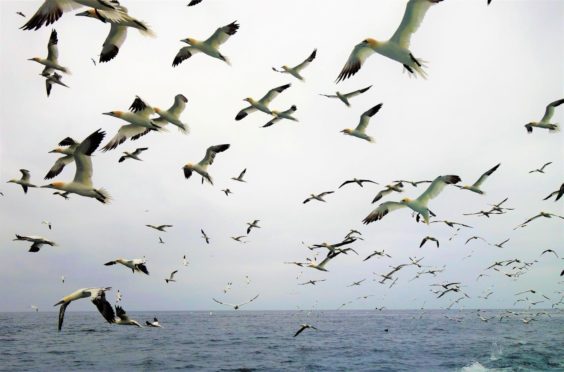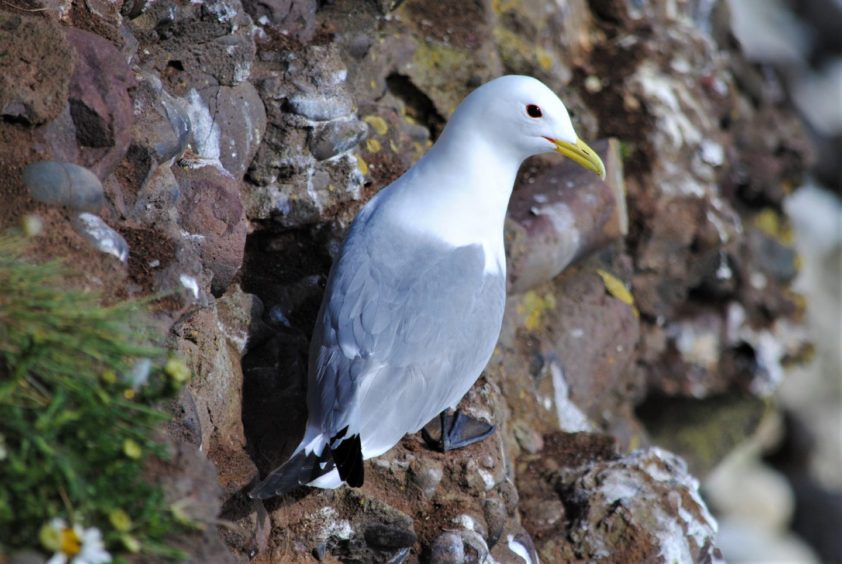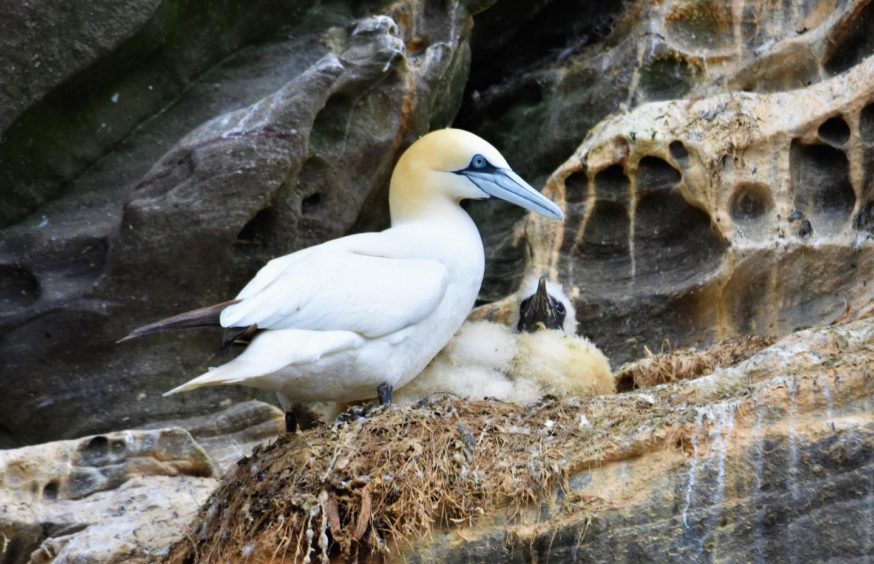A mass of gannetts spiralled in the air above me on open wings, accompanied by a clamouring cacophony drawn from the very heart of nature – a wild calling of the ocean, so hypnotic that I yearned to become more deeply immersed within its mesmerising hold.
The towering cliffs of the Isle of Noss in east Shetland brought a shadow to the sea and there were seabirds everywhere – gannets, guillemots, razorbills, and fulmars, all with an air of urgency as they shuttled back and forwards to their nesting ledges where rapidly growing down-fluffed youngsters sat on impossibly narrow rock ledges.
These magnificent cliffs cradled the dawn of new life, but death was all around too, and near our Shetland Seabird Tours’ boat, a bonxie (great skua) feasted upon the remains of a young gannet that had fallen into the sea from its precarious ledge.
Life on the edge
Life can be so cruel and short; if this youngster had not had the misfortune to fall, it could have looked forward to a long life, perhaps of up to 40 years.
The bonxie is the supreme sea predator and scavenger, prowling the cliff margins on fast-beating wings, forever on the look-out for unguarded chicks.
The result of their marauding was plain to see, for by the fringes of one large sea cave, a small nesting cluster of kittiwakes had taken such a toll from the bonxies and great-black backed gulls that now only a handful of nests still held young.
Bonxies, kittiwakes and other seabirds have co-existed in balanced harmony since the dawn of time, but now more insidious forces are at work, driving a decline in kittiwakes and many other seabirds due a dearth of sandeels to feed upon.
At Noss, breeding numbers of kittiwakes have catastrophically plummeted by over 90 per cent over the last two decades.
Sandeel populations were initially depleted by industrial fishing, but this has long ceased around Shetland to enable stocks to recover (although fishing by Danes, Norwegians and Swedes still occurs in other parts of the North Sea).
Climate change
Now, the problem is more related to our warming seas, which has led to ecosystem shifts resulting in a decline in the availability and size of sandeels.
Kittiwakes are particularly vulnerable to food shortages as they can only take prey such as sandeels and sprats when they occur at or near the surface of the sea, unlike diving species such as auks which have access to a greater variety of prey in the water column.
It is a vicious circle; as kittiwake nesting colonies get smaller due to lack of food, they are even more liable to predation by bonxies and gulls because there are fewer adults about to defend their nests as a large protective group.
Precariousness hung over the imposing sea cliffs at Noss like a brooding cloud.
For the moment, I shrugged such dark thoughts aside, buoyed by the throngs of seabirds, wheeling in the cool northern sea air above me, their joyous wings bringing hope over this sea of uncertainty.
Info
The island of Noss, with its towering cliffs, reaching up to 180m, support a vast array of nesting seabirds, including around 25,000 gannets.












